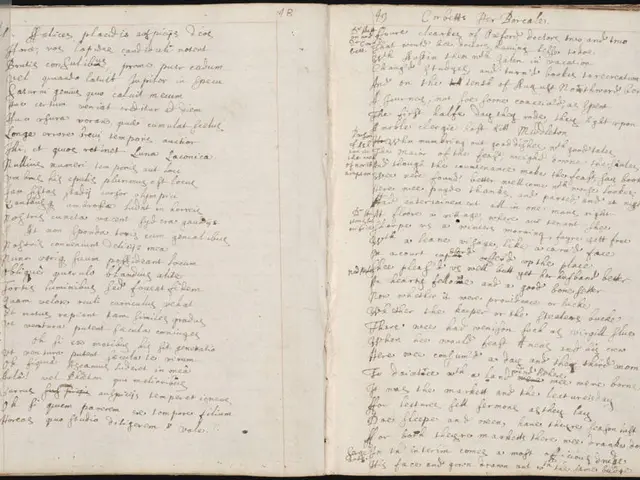Increase in India's employment rate reported in July, according to government statistics
India's Labour Market Shows Improvement, with Rural Areas Outperforming Urban
As of July 2025, India's Labour Force Participation Rate (LFPR) has risen to 54.9% overall, with rural areas showing a higher LFPR of 56.9% compared to 50.7% in urban areas [1][2][3]. The Worker Participation Rate (WPR) also increased, reaching 54.4% in rural India and 47.0% in urban India. The Unemployment Rate (UR) improved nationwide, dropping to 5.2% from 5.6% in June 2025, reflecting a strengthening job market.
Key rural vs. urban distinctions include: - Rural LFPR (56.9%) exceeds urban LFPR (50.7%). - Rural WPR (54.4%) is also higher than urban WPR (47.0%). - The unemployment rate declined in both areas but rural female labour participation notably accelerated, rising from 35.2% in June to 36.9% in July 2025 [1][2][3].
Gender-wise, the rural male LFPR is around 78.1%, while urban male LFPR is 75.1%; rural female LFPR is 36.9% (increasing), and urban female LFPR is 23.5% [2]. This signals a significant improvement in female workforce inclusion, especially in rural areas.
Over a longer term (2017-18 to 2023-24), women's employment rate in India nearly doubled from 22% to 40.3%, with rural female employment growing by 96% and urban female employment by 43% [4][5].
On average, 56.4 crore persons (aged 15 years and above) were employed in the country during the quarter April-June 2025, of which 39.7 crore were men and 16.7 crore were women. The WPR in urban areas increased slightly to 47.0% in July from 46.8% in June.
By industry of work, the majority of rural workers were engaged in the agriculture sector (44.6% of men and 70.9% of women). In contrast, the tertiary sector was the largest source of employment in urban areas (60.6% of men and 64.9% of women).
The Periodic Labour Force Survey (PLFS), which was revamped in January 2025 to generate high-frequency labour force indicators with wider coverage, provides annual estimates of key employment and unemployment indicators in both usual status and Current Weekly Status (CWS) for rural as well as urban areas [6]. The redesigned PLFS aims to produce key employment and unemployment indicators monthly for rural and urban areas at the all-India level under the Current Weekly Status (CWS) [7].
The PLFS also aims to extend Quarterly PLFS results to rural areas, producing quarterly estimates of labour market indicators for both rural and urban India under the CWS framework [3]. This initiative will provide a more comprehensive understanding of India's labour market trends.
[1] India’s Labour Force Participation Rate (LFPR) and Worker Participation Rate (WPR) Rise in July 2025
[2] Gender-wise Labour Force Participation Rate (LFPR) Shows Improvement in July 2025
[3] PLFS Quarterly Results Extend to Rural India, Showing Improved Labour Market Indicators
[4] Women's Employment Rate in India Doubles from 2017-18 to 2023-24
[5] Rural Female Employment Grows by 96% in India from 2017-18 to 2023-24
[6] PLFS Provides Annual Estimates of Key Employment and Unemployment Indicators
[7] Redesigned PLFS Aims to Produce Monthly Labour Market Indicators for Rural and Urban India
Read also:
- United States tariffs pose a threat to India, necessitating the recruitment of adept negotiators or strategists, similar to those who had influenced Trump's decisions.
- Weekly happenings in the German Federal Parliament (Bundestag)
- Southwest region's most popular posts, accompanied by an inquiry:
- Discussion between Putin and Trump in Alaska could potentially overshadow Ukraine's concerns








